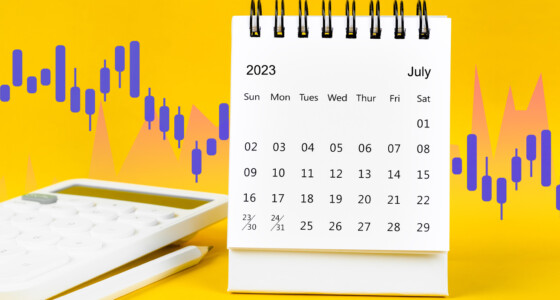

Stock prices vary from several cents to thousands of dollars. Did you know that Berkshire Hathaway stock is the most expensive stock today? Its highest price reached $544,389.26 on March 28, 2022.
Of course, most investors can’t afford such costly shares. Therefore, they look for something more affordable—but the price isn’t everything. There are numerous metrics you must study before purchasing stock. Read on to learn how to evaluate a stock for investment.
How to evaluate a stock before buying: discovering a company
How do you evaluate a stock before buying? You will likely invest in a company you know—perhaps by name or, maybe, you’ve used its services or goods. However, even if you know the company, you need to do comprehensive research. The research will consist of several points.
The company itself
Even if you know what services or goods the company provides, you need to understand the whole process. Make sure you know how exactly the company gets revenue. For instance, if it sells franchises, it likely will avoid sanctions in a country.
It’s also vital to understand whether the company has competitive advantages. This point is obvious if it has a solid market share and doesn’t require much research. However, if the company is new, you need to evaluate whether it will overcome its competitors.
Industry
The current conditions of the industry in which the company operates are vital. If the industry suffers, companies will also suffer.
After, you will need to find a company’s closest competitors. Any industry is represented by numerous corporations and firms, so you should choose those that have similar sizes, market shares, and stock prices.
How to analyze a stock before investing
After you do qualitative analysis, you should move to quantitative stock analysis.
Return on equity (ROE)
Using this metric, investors can evaluate stock profitability. It reflects a company’s efficiency in generating earnings growth with the capital it has. ROE shows the ratio between a company’s profit and shareholder equity.
Price-to-book (P/B) ratio
It’s an essential metric as it reflects a company’s current price in case it’s sold off. A company may go bankrupt anytime, and investors want to know how much they would get in that case. A company’s book value is determined by all assets that can be sold for cash — for instance, equipment, land, stocks, and bonds.
Price-to-earnings (P/E) ratio
The P/E ratio reflects the amount an investor will pay for $1 of a company’s earnings or how much a company is worth. It’s calculated as a division of a stock price by either its latest earnings per share or forecast earnings per share.
However, this metric can be read by investors in different ways. Value investors choose stocks with low P/E ratios. The low ratio stands for stock prices that are below their intrinsic value. Growth investors prefer stocks with a high P/E ratio.
*Earning per share (EPS) is also used by investors to evaluate a stock. It stands for the amount of money a company receives for each share.
Dividend yield
Not all companies pay dividends to their investors, and those who pay can change their amount if a company suffers. However, dividends are a very attractive point investors consider.
A dividend is money or shares paid to shareholders from a company’s profits.
When evaluating a stock, investors consider dividend yield — a metric calculated by dividing the stock’s annual dividend by the current stock price. As the metric changes regarding the current stock price, investors also consider a company’s ability to keep and increase the dividend amount in the future and the amount they will get annually.

What is the best way to evaluate a stock?
To become a successful stock investor, you must do a comprehensive analysis. A low price isn’t a reason to buy such shares. If stock evaluation seems complicated, you can use analyst reviews and ideas—but be careful, as analysts also make mistakes.








